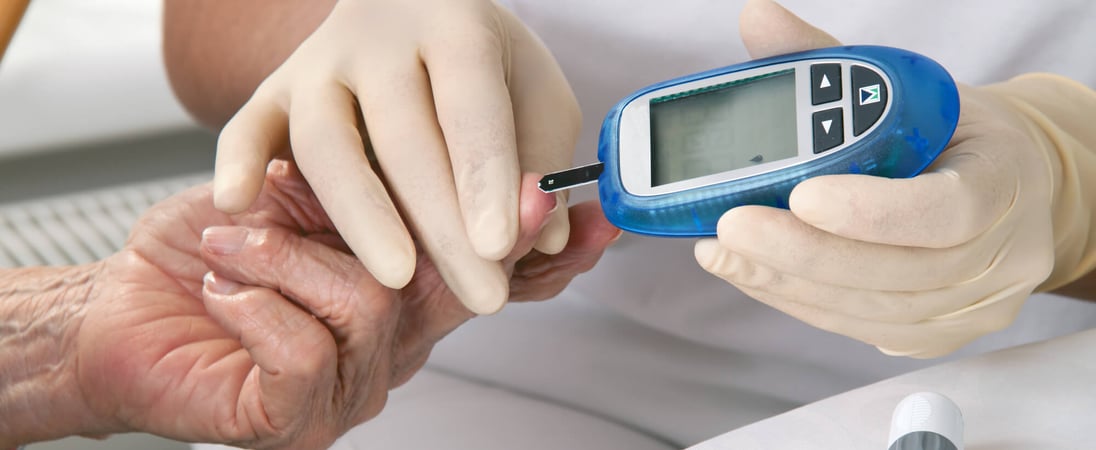
World Diabetes Day
Raise awareness of this common condition, “go blue” to show your support and make lifestyle changes that improve your health on World Diabetes Day.
With more than 10% of the American population having been diagnosed with Diabetes, this day is certainly an important one. Diabetes is the cause of a myriad of dangerous health issues and building awareness is the key to lowering these problems.
Inspiring conversations around health, wellness and prevention of disease, Diabetes Day offers the perfect opportunity to get more educated and connected around the cause.
History of World Diabetes Day
World Diabetes Day was first introduced in 1991, when it was founded by both the International Diabetes Federation (IDF) and the World Health Organization. In reaction to the rise in cases of Diabetes worldwide, it was decided that a day of the year should be chosen and dedicated to raising awareness about Diabetes, related health concerns, and potential causes.
The day chosen was the birthday of Sir Frederick Banting, the Canadian medical scientist who co-discovered insulin (along with Charles Best) and was the first person to use it to benefit humans. Banting was born in 1891 and didn’t even live to be 50 years old, but his contribution to science and medical health has been revolutionary for millions of people all over the world.
By 2006, World Diabetes Day had become an official United Nations Day, giving it even more credibility and support. Today, World Diabetes Day is an event that reaches more than 1 billion people all over the world and has an impact on folks from more than 160 countries.
Starting in 2007, the campaign began to be represented by a blue circle logo, which is now the official symbol for Diabetes Awareness.
The theme of World Diabetes Day regularly changes. For example, the theme for the day between 2009 and 2013 was education and prevention, and in the past such themes have been used to link with issues such as human rights, lifestyle, obesity, the disadvantaged and vulnerable, and children/teenagers. The 2021-2023 theme is “Access to Care”
It’s time to get connected with ways to observe World Diabetes Day!
How to Observe World Diabetes Day
Taking part in World Diabetes Day is a noble effort that connects millions of humans in countries all around the globe.
Join a World Diabetes Day Event
Various events around the world mark the day, including raising awareness in the media, lectures and conferences, sporting events, and leaflet/poster campaigning.
For information and access to global events, the World Diabetes Day website might be a good place to start.
Other information about events can be found through local, national and governmental resources based on specific locations.
Go Blue
Blue is the color chosen to denote support of finding a cure for diabetes, keeping in line with the symbol of the blue circle. “Going blue” is a global event created to mark the day, where people wear blue ribbons or clothes to note their support and create opportunities for conversation. In addition, landmark buildings and monuments around the world are lit up in blue, to help spread awareness about the day.
Get a Health Checkup
One of the most important responses to World Diabetes Day is making the effort to get and stay healthy. The first step is getting to a doctor or clinic and getting a health screening. Some pharmacies even provide free diabetes screenings, while some local hospitals offer free blood sugar tests.
Make an Effort to Prevent Diabetes
An active and healthy lifestyle is the best prevention tool for diabetes. Get educated on how to do this by finding information through online resources. Here are some of the most important things to know about preventing diabetes:
- Exercise Regularly. Those who are regularly active have a much lower chance of developing diabetes. Go for a run or a brisk walk, ride a bicycle or take an exercise class. Get moving as a habit!
- Drink Water. Avoid sticky sweet drinks (even “diet” ones) and make water the go-to beverage of life.
- Eat Fresh Food. Avoid all of those high-carb, empty-calorie pre-packaged foods. Instead, get into the habit of eating things that grow in the garden. Fresh veggies, leafy greens, low-carb fruits, lean meats and eggs are a great start.
Also on ...
View all holidaysNational Pickle Day
These crunchy, briny, and slightly tangy snacks, often found nestled beside a sandwich, can turn an ordinary meal into a savory delight.
We think you may also like...
World Tuberculosis Day
Honoring the relentless human spirit in the face of a formidable adversary, a disease that has shaped history and medical progress.
National Epilepsy Awareness Month
Shining a light on a condition that deserves more understanding, helping break down barriers and stigma, and showing support for those affected.
Age Without Apology Month
Embrace every laugh line and silver strand as a testament to a life well-lived. Aging gracefully means radiating confidence!
National Obesity Awareness Week
Promoting health and wellness, understanding the impact of lifestyle on well-being becomes crucial for public awareness.








